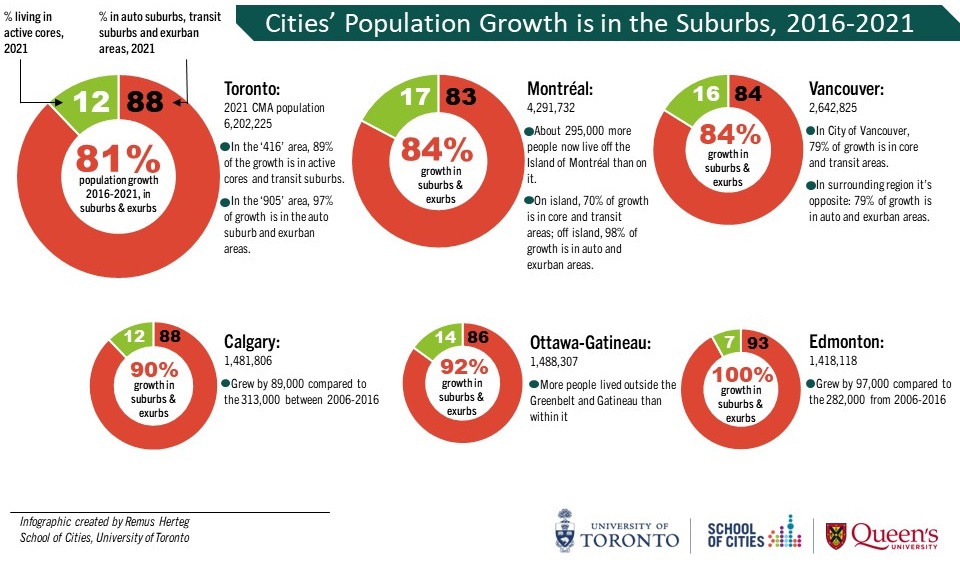Welcome to the Canadian Suburbs!
This website presents the results of a long-term research project, led by Dr. David L. A. Gordon, about the proportion of the population living in the Canadian suburbs. On this website, you will find:
Is Canada a suburban nation?
Estimating the size and policy implications of Canada’s suburban population
We routinely hear that Canada is one of the most urbanized nations, but that does not mean that most Canadians live in apartments and travel by public transit. The existing urban/rural classification has genuine utility, since many demographic, environmental housing and economic policies need to be different for rural areas. But if “urban” simply means non-rural, then it is too broad a category for community planning, since suburban planning problems and techniques are significantly different from inner-city ones.
This research project estimates the size and growth rate of our suburban population and considers the policy implications associated with these trends. The results indicate that about two-thirds of the Canadian population lives in neighbourhoods that most observers would consider suburban. Of course, the exact size of the suburban population depends on an exact definition of a suburb, which currently does not exist. Suburbia is a loosely defined concept, but no more difficult than “urban” or “inner-city”, and geographers and planners now have generally accepted definitions of these other concepts for policy analysis.
The method for the study involved analysis of census information for 2021 and selected previous years to 1951. The coverage for 1996 and 2021 included all Census Metropolitan Areas (CMAs) and a sample of Census Agglomerations (CAs). A Geographical Information System was used to produce maps at the census tract level for the CMAs. Multiple definitions of suburbia were tested, guided by different suburban policy interests (i.e. housing, transportation, density). Definitions and preliminary results were peer-reviewed by a seminar of leading geographers/planners with an interest in suburban research.

Preliminary research results were tested at Canadian and international scholarly conferences and were documented in refereed journal articles and book chapters. This research filled a surprising gap in the literature since there was no previous estimate of the proportion of Canadians who live in suburbs.
Outreach to the general public and professions includes this World Wide Web site presenting digital maps of the suburbs of Canadian cities, combined with analytic commentary. The research results were also disseminated in an op-ed article in a national newspaper, an atlas, several working papers, presentations to Canadian professional conferences, articles in newspapers from coast to coast and articles in professional magazines.


